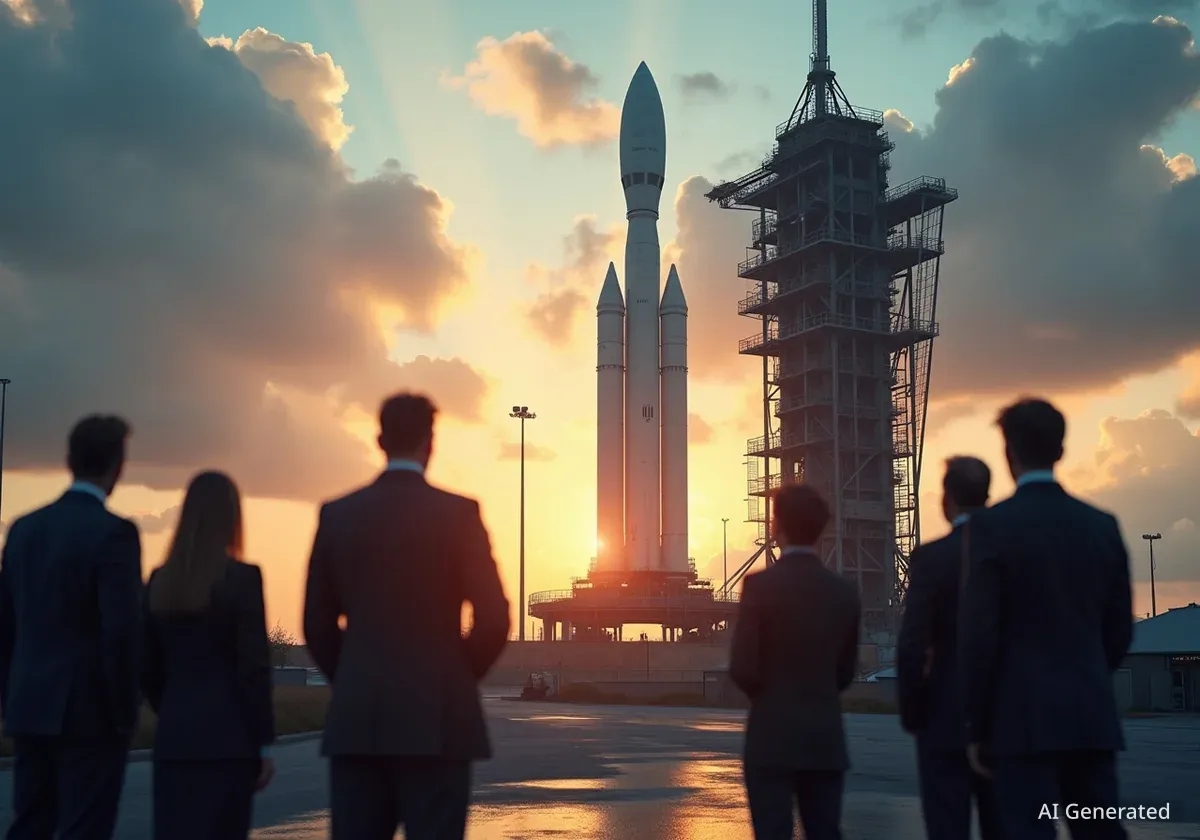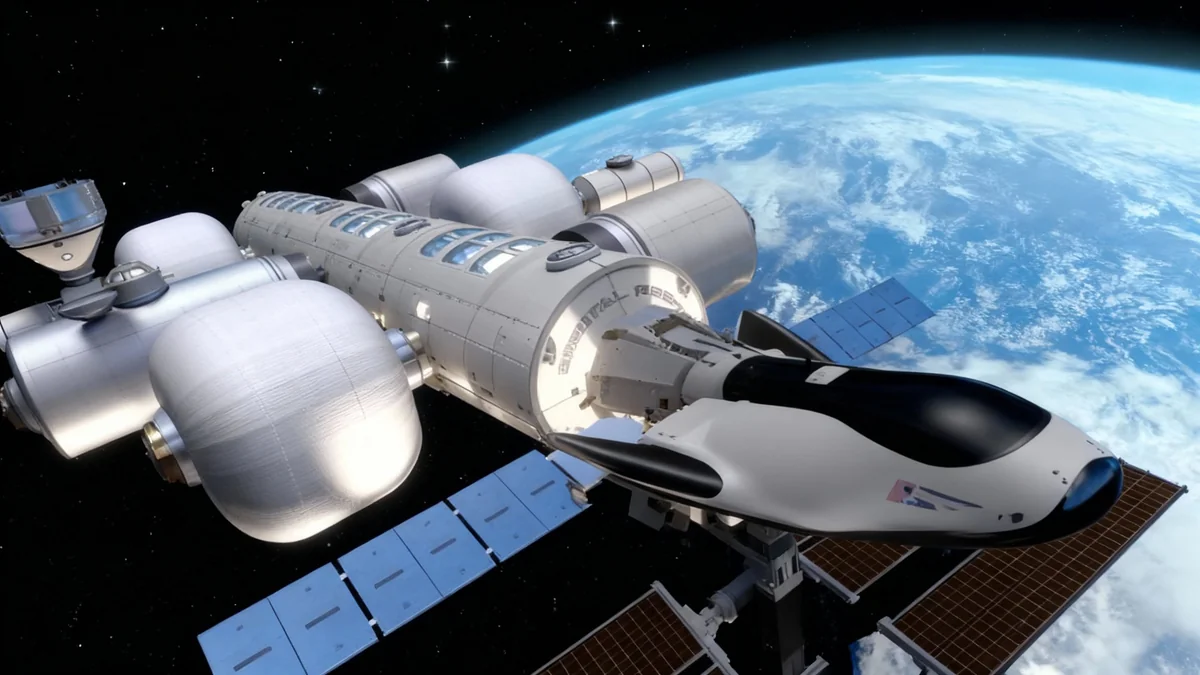Florida's Space Coast is preparing for a significant increase in tourism and economic activity driven by SpaceX's upcoming Starship launches. Officials anticipate that the liftoffs of the world's most powerful rocket will draw crowds comparable to the space shuttle era, generating substantial revenue for local businesses and creating new jobs.
State projections estimate that SpaceX's Starship operations in Florida could lead to at least $1.8 billion in infrastructure investment and the creation of approximately 600 new full-time jobs by 2030, signaling a new chapter of growth for the region's space economy.
Key Takeaways
- SpaceX plans up to 120 annual Starship launches from Kennedy Space Center and Cape Canaveral Space Force Station.
- High-profile launches are expected to attract crowds of 100,000 to over 200,000 people, similar to historic NASA missions.
- A 2023 survey found that space tourists spend an average of $231 per day during their stay.
- Concerns have been raised by local officials and residents regarding the environmental and logistical impacts of the increased launch frequency.
A New Era of Space Tourism for Florida
Florida's Space Coast is bracing for a surge in visitors as SpaceX moves forward with plans to launch its Starship rocket from the state. Experts predict the monumental scale of the Starship, which stands over 400 feet tall, will captivate public interest and attract massive crowds, revitalizing the kind of launch-day excitement not seen since the space shuttle program.
Don Platt, director of the Florida Institute of Technology's Spaceport Education Center, believes the sheer size and novelty of the rocket will be a major draw. "Just given the size of it and the curiosity of the thing, I think the crowds could be similar to the old days of the shuttle launches," Platt stated. He added that the rocket's association with future Mars missions enhances its appeal.
Historical Crowd Sizes
Past events demonstrate the region's capacity to host large crowds for significant launches. In May 2020, an estimated 220,000 spectators gathered for the Demo-2 mission, which marked the return of crewed launches from American soil. Similarly, the Artemis I moon mission in November 2022 drew between 100,000 and 200,000 people, despite its pre-dawn liftoff time.
SpaceX is currently seeking regulatory approval for a high-frequency launch schedule. The company plans for up to 44 Starship launches per year from Kennedy Space Center (KSC) and another 76 annually from the adjacent Cape Canaveral Space Force Station. While a definitive timeline for the first Florida launch has not been announced, construction on Starship facilities is already underway.
The Economic Impact of Rocket Launches
High-profile rocket launches provide a direct and measurable boost to the local economy in Brevard County. Data from the Space Coast Office of Tourism, based on cellphone GPS tracking, confirms that these events drive significant spending in several key sectors.
Visitors traveling to the area for launches contribute to revenue in:
- Lodging and accommodations
- Restaurants and beverage services
- Recreation and entertainment
- Retail shopping
A 2023 survey of overnight visitors who came primarily for a launch provided detailed spending habits. The survey revealed that the average visitor spent $231 per day. With an average party size of 2.8 people and an average stay of 4.8 nights, the total spending per party was approximately $3,101. These figures highlight the substantial financial contribution of space tourism.
Visitor Spending Breakdown
According to the Space Coast Office of Tourism, the average spending for a group traveling to see a launch is over $3,000. This spending is concentrated primarily in the Cocoa Beach-Cape Canaveral area (42% of visitors) and Titusville (23%).
Beyond tourism, the long-term economic forecast is promising. State officials project that SpaceX's Starship operations will stimulate $1.8 billion in infrastructure investment and support around 600 new full-time jobs by the end of the decade. This represents a significant expansion of the region's already robust aerospace industry.
Balancing Growth with Community Concerns
The prospect of more than 100 additional launches per year has raised concerns among some residents and local officials. During a recent public meeting held by the Federal Aviation Administration (FAA), hundreds of written statements were submitted detailing potential environmental and social impacts.
Key issues raised by the community include:
- Projected delays at Florida airports due to restricted airspace.
- Increased closures of Playalinda Beach at the Canaveral National Seashore.
- Operational disruptions for local businesses near launch sites.
- The cumulative environmental effects of a high-cadence launch schedule.
Brevard County Commissioner Katie Delaney formally requested that the FAA conduct a comprehensive review of these cumulative impacts. In a letter, she highlighted that many businesses have already reported disruptions from the current launch frequency, including limited access to worksites and interruptions to supply-chain activities.
"Of course, I support the space industry. I just really feel like there should be some balance between the quality of life and supporting this industry that's so important to our community," Delaney said during a commission hearing.
However, other officials maintain that embracing this growth is essential for the region's future. Commissioner Thad Altman expressed strong support for SpaceX, stating, "The more rockets launched and the bigger, the better." He argued that Brevard County's unique infrastructure and geography make it the ideal location for large-scale launch operations, which are vital for the area to remain competitive as the nation's primary Space Coast.
Florida's Role in an Expanding Space Industry
While SpaceX continues its Starship development and testing in Boca Chica, Texas, the company has emphasized its long-term commitment to Florida. During a recent symposium, SpaceX Vice President of Launch, Kiko Dontchev, noted that the company has been planning its Florida expansion for nearly seven years.
Texas vs. Florida Operations
SpaceX's Texas facility in a sparsely populated area serves as a development and testing site. In contrast, Florida's Space Coast has a decades-long history of rocketry and established infrastructure, positioning it as the primary operational hub for established launch vehicles. The introduction of Starship to Florida will integrate the world's largest rocket into the world's busiest spaceport.
Greg Autry, associate provost for space commercialization at the University of Central Florida, described Starship as a key component of a larger launch boom at Cape Canaveral. This boom also includes new vehicles like ULA's Vulcan and Blue Origin's New Glenn. Autry anticipates another economic surge for the region, similar to what occurred a few years ago.
"I think that's going to be huge excitement for the Space Coast," Autry said. "And I think we'll see another kind of economic boom... I think it's, overall, going to be an amazing thing for Central Florida." He emphasized that Starship, in particular, is "taking it to a whole nother level" in terms of payload capacity and public excitement, further cementing Florida's central role in the future of space exploration and commerce.





